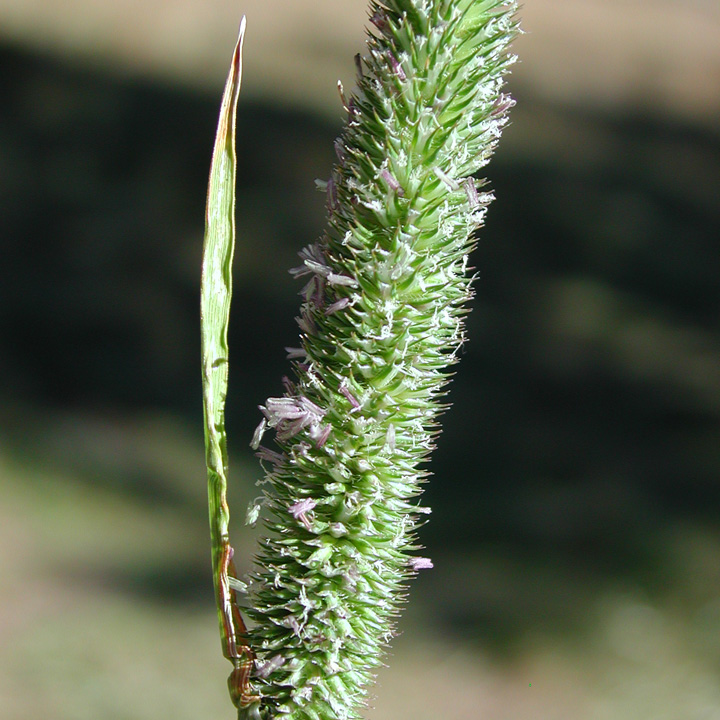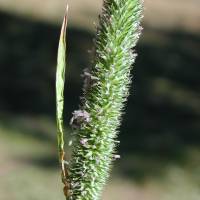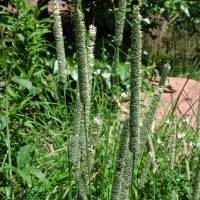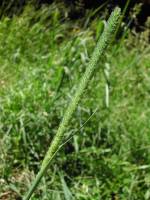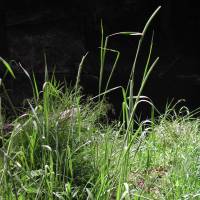This species has abundantly escaped in all parts of the state. It is usually found in either dry or moist soil along roadsides and railroads and in fallow fields, pastures, and waste places.
Common Name: timothy
Duration: Perennial
Nativity: Non-Native
Lifeform: Graminoid
General: Tufted perennial with stems 50-100 cm tall with lower internodes enlarged or bulbous.
Vegetative: Sheaths not inflated with occasionally present auricles but inconspicuous, blades to 45 cm long, 4-8 mm wide, flat and scabrous margins, ligules obtuse 2-4 mm.
Inflorescence: Panicle 4-10 cm long, 5-7. 5 mm wide, compressed-cylindrical, 5-20 times as long as wide, not tapering at apex; branches adnate to rachises, spikelets 1-flowers, elliptic; glumes subequal, 2-4 mm long, truncate, with an awn and keel strongly pectinate, awn 1-1.5 mm, lemma 1.5-2 mm long, ovate, truncate and erose, faintly 5-nerved, sometimes with a minute awn.
Ecology: Found in moist woodlands, grasslands, along streambanks, and meadows from 4,000-9,000 ft (1219-2134 m); flowers June-September.
Notes: This is an escaped pasture grass that is now widespread.
Ethnobotany: Used as a fodder, and the stems were made into hair brushes.
Etymology: Phleum is from Greek phleos, a name for a kind of swamp grass,while pratense means growing in meadows.
Synonyms: Phleum nodosum, Phleum pratense subsp. nodosum, Phleum pratense var. nodosum
Editor: SBuckley, 2010
Tufted, usually 5-10 dm, the culms somewhat bulbous-thickened at base, minutely scabrous at the summit; upper sheaths terete, not dilated; blades ordinarily 5-8 mm wide, rough-margined; infl cylindric, (3-)5-10(-15) cm נ5-8 mm; glumes 2-3.2 mm, abruptly rounded-truncate to an awn 0.7-1.5 mm, hispidulous-ciliate on the keel, with thin, pale or green margins; 2n=14, 21, 28-84. Native of Europe, cult. for hay and pasture, escaped and naturalized throughout most of the U.S. and s. Can.
Gleason, Henry A. & Cronquist, Arthur J. 1991. Manual of vascular plants of northeastern United States and adjacent Canada. lxxv + 910 pp.
©The New York Botanical Garden. All rights reserved. Used by permission.


